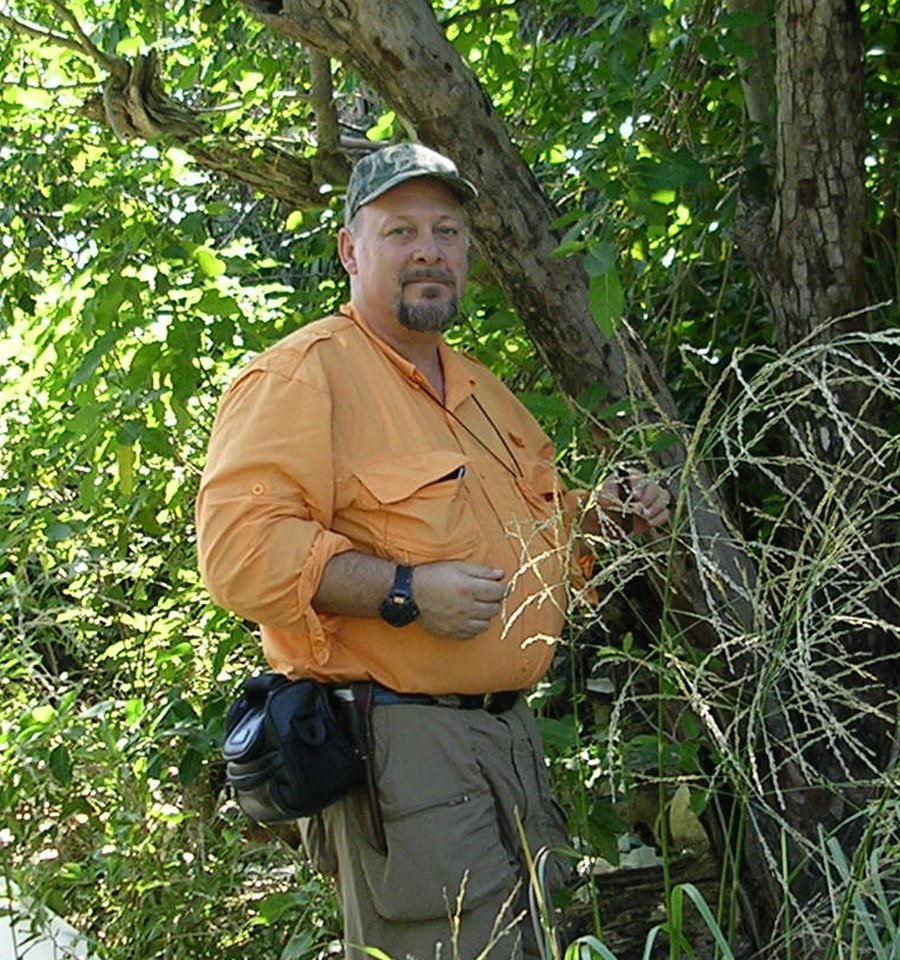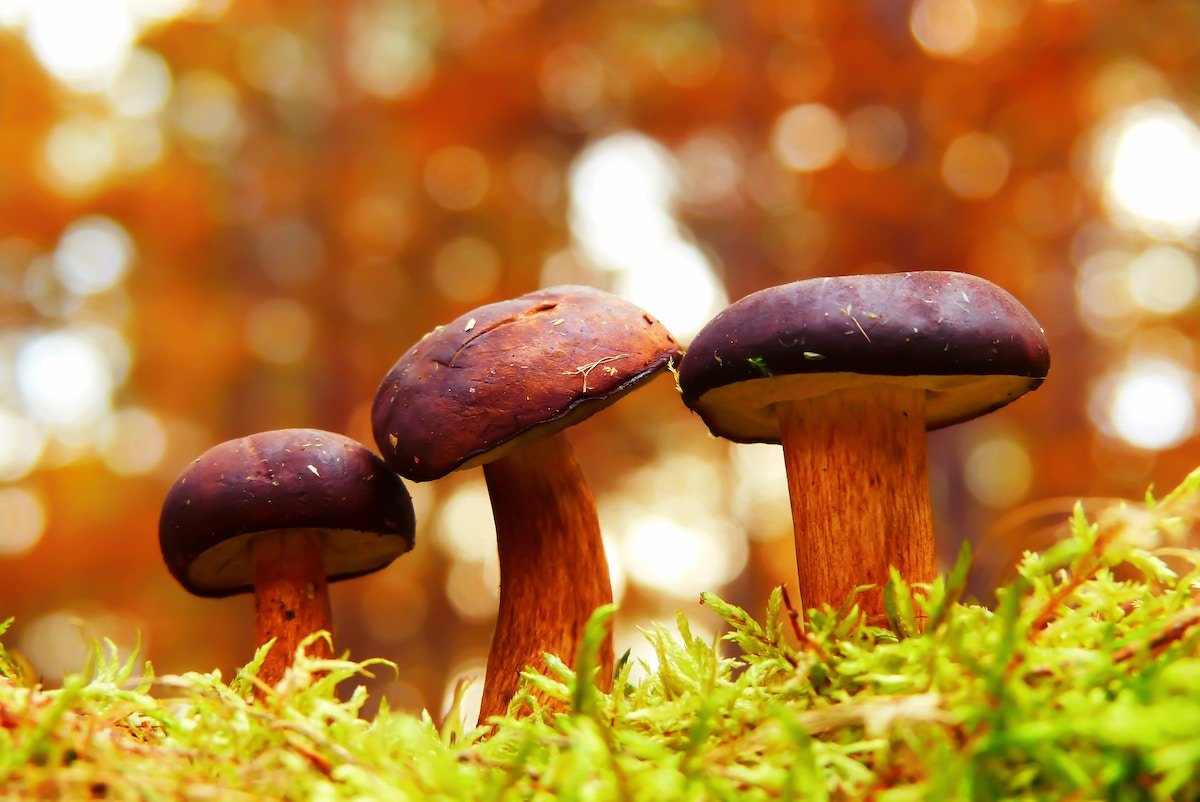Wildlife, Fungi, and Planet Earth: The Ultimate Love Story
Tim Baroni is the Indiana Jones of fungi, and when the Indiana Jones of fungi says Planet Earth depends on mushrooms, we believe him. It’s not just the planet itself that relies on fungal networks, of course, it’s all the living things on the planet—from fungus gnats to deer, bears, and humans.
Videos by Outdoors
While Dr. Jones studies and teaches archaeology, Dr. Baroni studies and teaches mycology. He’s a distinguished professor of biology at the State University of New York (SUNY), and he researches the global biodiversity of macrofungi with particular emphasis on mushrooms and other fungi in the Americas. His influence extends beyond his university, thanks to his book, Mushrooms of the Northeastern United States and Eastern Canada, and a long list of academic research papers.
He also gets to do exciting field research—with, admittedly, far less dueling than his archaeologist counterpart.

“We only know 5%, maybe 8% of the fungi on this planet,” Baroni says. “That’s what I do. I like to put on my Indiana Jones hat, get on a helicopter or jump on a Jeep, and go to places people have never been and find as many new things as I can and publish them in the scientific literature. I’m still doing it at 75. I gotta slow down at some point, but I find it lots of fun.”
Humans and wildlife have foraged mushrooms for food for eons. Humans have also used fungi medicinally to great effect (think penicillin). However, there are some more nuanced and, frankly, far more interesting ways animals and fungi interact.
Baroni was our guide as we unraveled the connection between wildlife, fungi, and Planet Earth.

Wildlife Need Fungi
Animals big and small forage for and eat mushrooms and other types of fungi. Which ones? Some might surprise you.
“Let’s go for a walk in the woods,” Baroni says. “So you and I are walking through a local forest here and we look down, there’s a bunch of mushrooms on the ground, and around the margins of the mushrooms are tiny teeth marks. We know lots of small animals use mushrooms for food.”
Baroni describes a time when he observed a squirrel collecting hallucinogenic fly agaric (Amanita muscaria) mushrooms, carrying them up a tree, and wedging them between tree branches “presumably to dry them and use them for food . . . or have one hell of a party with his buddies,” he jokes.
Besides squirrels and related members of the rodent family, many monkeys, birds, and insects are known to feast on mushrooms. Fungi-loving primates (besides humans) include bonobos, lemurs, marmosets, colobines, macaques, and even gorillas. Goeldi’s monkeys of the Amazon Basin forage far and wide for their favorite mushrooms.
Among birds, crows and jays are known to eat mushrooms, as well as brown thrashers, brush turkeys, and emus, among others. In the insect family, beetles, gnats, and ants are just a few of the smallest fungi fans. Slugs and snails also munch on mushrooms, along with box turtles and many other omnivores.
Large Mammals
Deer consume a great deal of fungi. This includes reindeer, which sniff out hardy lichens (a fungi/algae combo) beneath the snow to help them survive Arctic winters. Bears eat a lot of mushrooms, too. One study of grizzly bears in Yellowstone National Park details observations of grizzlies eating mushrooms, as well as traces of fungi in grizzly bear feces.
As opportunistic foragers, black and brown bears eat a lot of whatever they can find. If there are a lot of mushrooms in a particular place or during a particular season, they will eat a lot of mushrooms.
Interestingly, even polar bears eat mushrooms during the ice-free season. One study took a close look at polar bears’ terrestrial diet (their diet when they’re not hunting seals on the sea ice), and found it consisted of things like marine algae, lichens, mosses, and mushrooms.
One of Baroni’s favorite mushroom-eating species to discuss is pigs, which are masters at sniffing out the most expensive mushrooms around—truffles.

“Truffles grow symbiotically with certain kinds of oak trees,” Baroni says. “Pigs can find them; they can smell them, and they dig them up [and] they eat them. They’re so valuable—I’m talking thousands of dollars per pound.”
Baroni says pigs and wild boars are uncannily good at sniffing out these rare and extremely expensive delicacies, which is a little bit ironic, considering pigs have a reputation for having a less-than-sophisticated palate.
Fungi Need Wildlife
When animals forage for and dig up mushrooms, which are the fruiting bodies of a fungus, they help the fungi spread their spores around the forest. While mushrooms can spread their spores on their own, a little help never hurts.
“[Fungi] spores need to get in the air to travel to new substrates so that their species can continue to thrive and spread,” Baroni says. “So pigs, when they dig up the truffle to eat them, they’re chomping on them and the spores are puffing out of their mouths, getting into the air, and being dispersed. So animals help with dispersal of those really expensive truffles [and] hundreds of different kinds of underground fungi.”

Even human foragers are helping fungi survive by picking their fruiting bodies and transporting them miles farther than they’d be able to travel on their own.
In an interesting example of how wildlife and fungi rely on each other, leaf-cutter ants bring leaves back to their nests not to eat but to “feed” to a fungus that in turn feeds the ants’ larvae. The ants fertilize the fungus with fresh-cut leaves and protect it from pests. In turn, the fungus offers crucial nutrition for the ants’ next generation, and the cycle continues.
Famed mycologist Paul Stamets has also noted the interesting way animals like bears can help fungi grow. In a 2015 Bioneers presentation, Stamets describes hiking in the Olympic National Forest with a friend and coming across bear scratches on an old-growth tree. A couple of years later, the pair returned to the same spot and found polypore mushrooms growing in the bark-free scratches left behind by the bear, which provided the perfect entry wound for the polypores.
‘Fungi Are Key to the Health of This Planet’
Baroni is adamant that without fungi, life on Earth as we know it would not be possible.
“We’re now at the point where we know this for a fact,” he says. “Plants would not be on the surface of this planet without the aid of fungi, without what’s called mycorrhizal symbiosis.”

“Forests are really important to us, and the fungi, [which] partners with the trees, are absolutely important to us,” Baroni says. “And we now know that fungi sequester ungodly amounts of carbon dioxide we’re releasing that’s causing planet warming.”
The symbioses between fungi and plants have allowed plants to thrive, and plants have allowed life to thrive.
From feeding bears, boars, and bonobos to absorbing carbon dioxide and supporting the plants that provide the oxygen that enable life on Earth, fungi and mushrooms are like Earth’s unsung heroes. Baroni, the Indiana Jones of mycology, sums it up best when he says: “Fungi are key to the health of this planet.”
Without knowing it, animals do their part to help the fungi too. This connection between wildlife, fungi, and Planet Earth is, perhaps, the ultimate love story.
Source: https://outdoors.com/wildlife-fungi-and-planet-earth-love-story/






